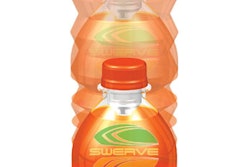While we’re highly regarded in such areas as design, engineering, specifying, purchasing, and other “technical” aspects of packaging, we’re viewed as being not so strong when it comes to marketing and advertising, consumer insight, awareness of distribution channels, or any of the other skills that occupy the Demand side of the integrated value chain. It’s almost as if we’re recognized as a necessary but unfortunate part of what it costs to go to market.
I think a change is in order. It’s not that we should abandon our roles as specialists who excel on the Supply side of things. But our profession is in need of more leaders with knowledge and expertise across the entire integrated value chain, not just the Supply side.
Brand managers who are part of the marketing department don’t have the kind of big-picture awareness or background to pull this off. These brand managers—some of them directors and vice presidents—are often educated with marketing MBAs. But our research has found that there are no MBA text books with more than three pages on packaging. In terms of consumer insight methods, most “experts” focus heavily on product and brand issues. To their credit, they bring both quantitative and qualitative analysis to bear. But less than 5% of consumer-insight experts understand the subtleties of packaging. Maybe that’s why 80% of new products fail.
Given that marketing and consumer insight experts don’t have the knowledge needed to make good decisions about packaging, it’s up to packaging professionals to take the lead. Many of our packaging friends appreciate this perspective but don’t know where to start. We suggest starting with the consumer. The word “user” may be more accurate where non consumer products are concerned, but for the purposes of this argument, let’s stick with the word “consumer.” In the consumer’s mind, the “product” is a combination of many elements, including everything from product to package to brand equity to experience to services to sustainability. Consumers may hardly be aware that all these elements play a role in their decision making. But trust me, they do, even if it’s at a subconscious level. We need to better understand how these elements influence consumers as they stand in the store and make their 5-second decision about what they’re going to pick from the shelf.
Our job as packaging professionals is to understand how to extract consumer insights and to translate these into packaging designs that deliver meaningful and relevant value. Cost is a big part of how value is defined, and we always need to keep cost down to maximize return to the business. But most successful packaging innovations in the market today carry a significant upcharge. That means the benefits these innovations bring to the consumer must be compelling enough to justify a higher suggested retail price. Sometimes the benefits can provide returns in other ways, including growth in new channels or increased brand or corporate stock value. Packaging can be the piece that provides greater relevance for consumers, or marketplace differentiation vs competitive products and brands. Differentiation can take the form of “good enough” value or “high personal” value—either way, differentiation is the key.
In addition to understanding the consumer, it is also important to monitor trends—consumer, channel, technical, marketing, design, and sustainability. Packaging organizations—brand owners and suppliers—need a structure or process to do all of this while continuing to provide supply chain excellence.
Finally, don’t judge packaging professionals just by their title. No degreed packaging program confers a degree of “packaging engineering,” yet there are “packaging engineers” all around the world. And University packaging programs offer much greater breadth of curriculum than typical engineering programs, including courses in business, communications, psychology, marketing, finance, and law. By calling ourselves “packaging engineers,” we are once again consigning ourselves to that Supply side of the value chain, where our roles, though viewed as important, are terribly and unfairly circumscribed. A degree in packaging represents so much more, and companies need to appreciate this so they can extract full value from their packaging professionals.
As we conclude an economically challenging 2008, we encourage all packaging professionals to think about what you will do differently in 2009 and beyond to embrace this challenge and redefine the breadth and strategic importance of your roles and responsibilities. This challenge applies to all across the value chain, including brand owners, retailers, suppliers, educators, members of the trade press, associations, and packaging NGOs. Together we can not only elevate our profession’s standing in the business world, but also add greater value through packaging than we ever have.






























